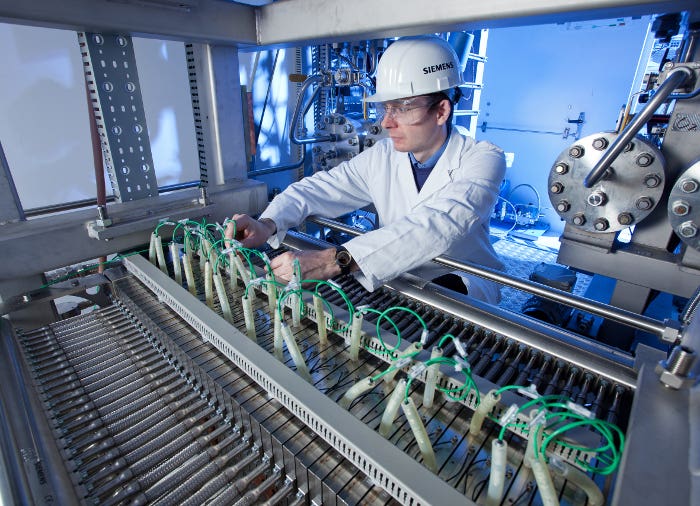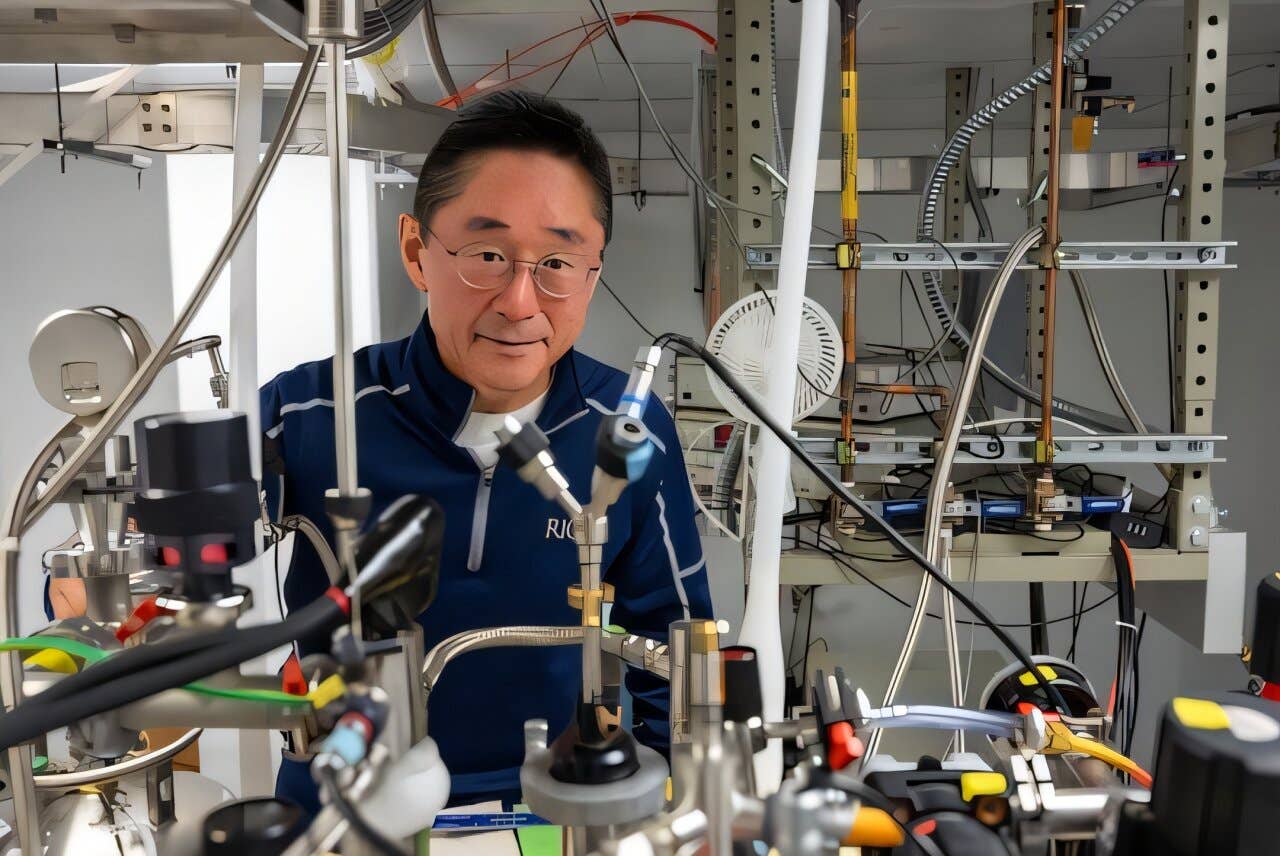Splitting Seawater: The Key to Limitless Green Hydrogen Production
To unlock hydrogen’s true potential, scientists are turning their gaze towards the vast blue expanses of our oceans.

[Nov. 5, 2023: Staff Writer, The Brighter Side of News]
To unlock hydrogen's true potential, scientists are turning their gaze towards the vast blue expanses of our oceans. (CREDIT: Creative Commons)
As our planet tilts on the axis of change, navigating away from the pervasive use of fossil fuels, one element holds the promise of a sustainable future: hydrogen. This abundant and clean-burning gas could revolutionize our energy systems, accelerating our journey toward decarbonization and a net-zero world.
But there's a twist in this tale of potential ecological salvation. To unlock hydrogen's true potential, scientists are turning their gaze towards the vast blue expanses of our oceans — a source that comprises a staggering 97 percent of Earth's water.
Currently, the production of hydrogen fuel hinges on the electrolysis of water — an intricate dance of atoms and electricity facilitated by devices known as electrolysers. These machines, however, have a penchant for the purest water, while the ocean's waters are a cocktail of salts, minerals, metals, and living microorganisms that can wreak havoc on the sensitive systems within.
A hydrogen refuelling station in Tenerife, Spain Lucia Villalba. (CREDIT: Creative Commons)
Against this backdrop, a remarkable surge in research has set the stage for a paradigm shift. Teams across the globe are now on the brink of transforming desalinated seawater and even untreated ocean water into hydrogen fuel, leveraging the might of renewable energy sources. Herein lies a two-pronged boon: the alleviation of freshwater demand for fuel production and the expansion of hydrogen production's geographical footprint.
A Hydrogen Horizon: Energy's Clean Future
The gravitas of hydrogen in our energy transition cannot be overstated. This versatile gas is not just a means to store and transport energy; it can also power sectors where direct electricity use is challenging. The International Energy Agency's projections are telling: by 2030, we may see the production of low-emission hydrogen surge, with projects in the pipeline poised to churn out 38 million tonnes annually.
Related Stories
"Green hydrogen," generated from splitting water molecules using renewable electricity, stands at the vanguard of this low-emission revolution. Yet as we ramp up production, an unlikely rival to scalability has emerged: the very water that is elemental to the process.
Pau Farras from the University of Galway spotlights a potential conflict: "We need to avoid creating a situation where there is competition between water that we need for drinking and water that we need for fuel production." Concerns simmer that hydrogen production could guzzle up to 20 percent of water resources in certain regions, particularly where freshwater is a prized commodity.
Seawater Splitting: The Current of Innovation
The prospect of seawater electrolysis has galvanized new interest, given its promise of marrying offshore renewable energy generation with hydrogen production. The Netherlands' ambitious blueprint for an offshore wind farm coupled with a large offshore electrolyser epitomizes this trend. The hydrogen thus produced would journey to shore through repurposed natural gas pipelines, skirting the cost-intensive installation of new underwater cables.
Map of announced low-emission hydrogen production projects. (CREDIT: Creative Commons)
Beyond the Netherlands, a tapestry of pioneering ventures intertwines offshore wind with hydrogen across the UK and beyond. For distant wind farms, transporting hydrogen as opposed to electricity could be more economically viable, revolutionizing energy logistics with ships or pipelines.
Envisioning a step further, Siemens's technology experts dream of autonomous "production islands," using the ocean's water and winds to perpetually craft hydrogen and chemicals like ammonia, fueling ships on-the-go.
Desalination: A Stepping Stone or a Stumbling Block?
The challenge of using ocean water directly for electrolysis stems from its complex chemistry. As Alexander Cowan from the University of Liverpool points out, "Seawater is the extreme." Impurities in seawater hasten the deterioration of electrolyser components and can lead to the formation of corrosive chlorine substances and problematic biofilms on electrodes.
A preliminary solution lies in desalination — purifying seawater before it reaches the electrolyser. An exemplar of this approach is a system in Spain's Canary Islands, using desalinated seawater and solar energy to produce hydrogen sufficient to power buses and cars, with plans afoot to fuel public buses in Tenerife next year. Similarly, the futuristic Saudi city of Neom intends to integrate desalinated water for drinking and green hydrogen production at an unprecedented scale.
Yet desalination, while a viable interim measure, is energy-intensive and might not suit smaller operations, according to Zongping Shao from Curtin University.
Innovations in Electrolysis: Bypassing Barriers
The quest for a direct-seawater electrolysis method is brimming with innovation. Research teems with a plethora of designs, some employing membranes to sieve out impurities before water enters the electrolyser, and others that rely on sturdier components unfazed by the ocean's complexities.
Shao's team, for instance, has designed an electrolyser cradled by Teflon membranes that enable water vapor to seep in while excluding contaminants. Harvard's Daniel Nocera is pioneering a method that pre-purifies water using a membrane that harnesses osmosis, a natural phenomenon, to draw water through as it splits.
Eliminating membranes entirely, Daniel Esposito's team at Columbia University has given rise to more rugged, affordable electrolysers. His startup, sHYp, aims to launch these alongside a bespoke saltwater processing step that not only prevents biofouling but also generates valuable byproducts.
These ventures are inching closer to commercial reality, with pilot projects slated to integrate these novel electrolysers with offshore wind turbines and at ports across the US, the UK, and Europe.
The Verdict on Seawater Electrolysis: A Spectrum of Opinions
Opinions on the feasibility of direct seawater electrolysis are mixed. Cowan acknowledges that while promising, these methods might still face issues like biofouling at larger scales. Farras is more skeptical, doubting the capacity to circumvent biological impediments, and posits that where desalination infrastructure exists, its additional energy cost is negligible compared to electrolysis itself.
Yet, for Cowan, direct electrolysis may shine in remote settings or dovetail with offshore energy projects, potentially sparing valuable space on offshore platforms for other uses. Furthermore, the pursuit of direct seawater electrolysis could spawn more robust systems capable of tolerating impurities, a boon for utilizing varying water sources for hydrogen fuel production.
The saga of harnessing the ocean's bounty for clean energy is unfolding, with each innovation and trial inching us closer to a vision where our oceans could sustain not just the richness of marine life but also the energy needs of our civilization. In this ambitious endeavor, the only certainty is the relentless pursuit of scientific ingenuity, propelling us towards a horizon where hydrogen is as synonymous with fuel as the oceans are with life itself.
How can green hydrogen be used by industry?
Green hydrogen can be used in industry in a variety of ways, including:
Ammonia production: Hydrogen is a key component in the production of ammonia, which is used in a wide range of industrial applications, including fertilizers, plastics, and explosives. Green hydrogen can be used to produce ammonia without emitting greenhouse gases.
Oil refining: Hydrogen is used in oil refining to remove sulfur from crude oil. This process, known as hydrotreating, produces cleaner-burning fuels and reduces emissions. Green hydrogen can be used to hydrotreat crude oil without emitting greenhouse gases.
Methanol production: Hydrogen is also used in the production of methanol, which is a versatile fuel that can be used in transportation, power generation, and other applications. Green hydrogen can be used to produce methanol without emitting greenhouse gases.
Steelmaking: Hydrogen can be used to reduce iron ore in the production of steel. This process, known as direct reduction, produces less emissions than traditional methods of steelmaking. Green hydrogen can be used to reduce iron ore without emitting greenhouse gases.
Other industrial applications: Green hydrogen can also be used in other industrial applications, such as glassmaking, electronics manufacturing, and food processing.
The use of green hydrogen in industry has the potential to significantly reduce greenhouse gas emissions and help to decarbonize the global economy. However, the cost of green hydrogen is still relatively high, so there is a need to scale up production and reduce costs in order to make it more competitive with fossil fuels.
Companies that are using green hydrogen in industry:
Shell: Shell is one of the world's leading oil and gas companies, and it is also a major player in the green hydrogen market. Shell is developing green hydrogen projects in a number of countries, including Australia, Germany, and the Netherlands.
Linde: Linde is a leading industrial gases company, and it is also a major player in the green hydrogen market. Linde is developing green hydrogen projects in a number of countries, including the United States, China, and Japan.
Bloom Energy: Bloom Energy is a company that develops and manufactures fuel cells that produce electricity from hydrogen. Bloom Energy's fuel cells are used in a variety of applications, including data centers, hospitals, and manufacturing facilities.
These are just a few of the companies that are using green hydrogen in industry. As the cost of green hydrogen continues to fall, we can expect to see even more companies adopt this clean and sustainable fuel.
For more green news stories check out our Green Impact section at The Brighter Side of News.
Note: Materials provided above by Tel-Aviv University. Content may be edited for style and length.
Like these kind of feel good stories? Get the Brighter Side of News' newsletter.
Joseph Shavit
Head Science News Writer | Communicating Innovation & Discovery
Based in Los Angeles, Joseph Shavit is an accomplished science journalist, head science news writer and co-founder at The Brighter Side of News, where he translates cutting-edge discoveries into compelling stories for a broad audience. With a strong background spanning science, business, product management, media leadership, and entrepreneurship, Joseph brings a unique perspective to science communication. His expertise allows him to uncover the intersection of technological advancements and market potential, shedding light on how groundbreaking research evolves into transformative products and industries.



